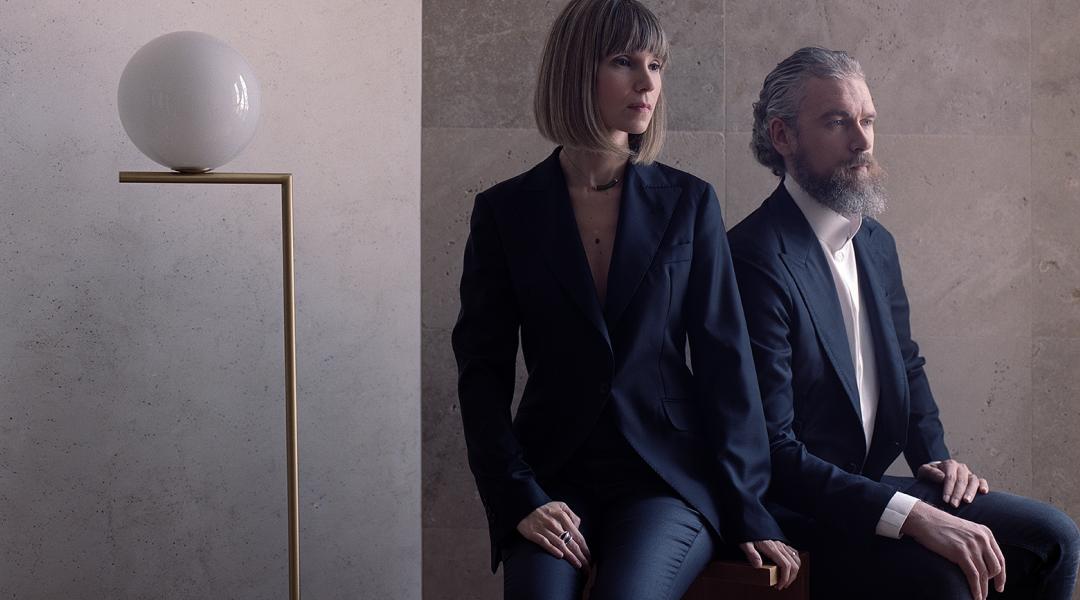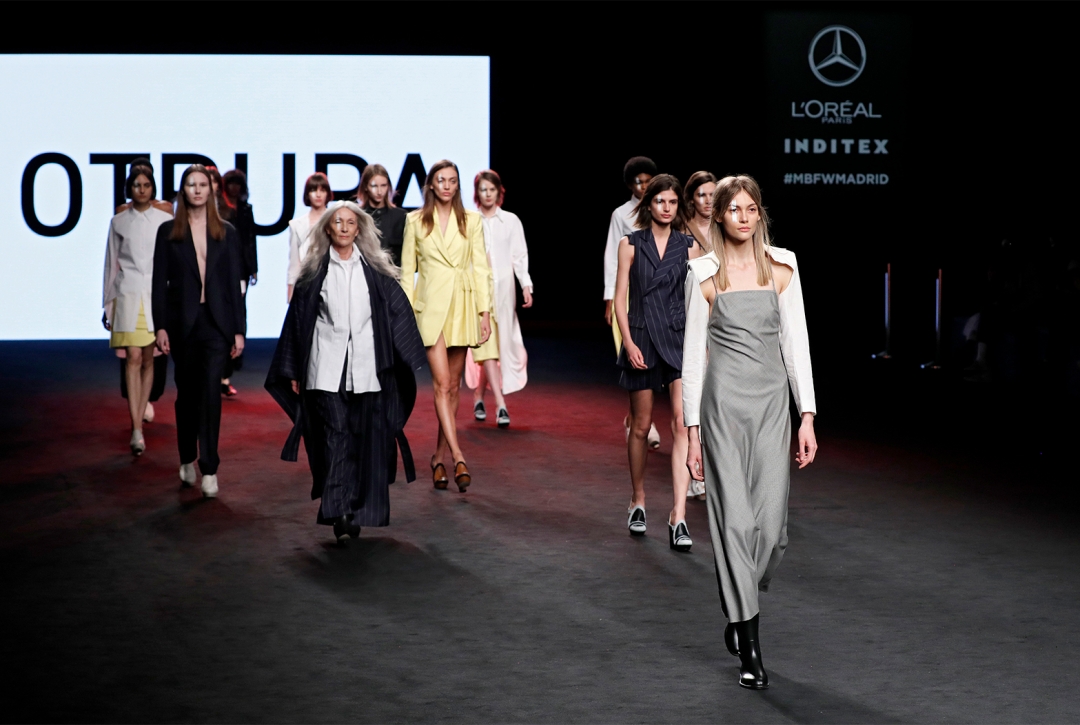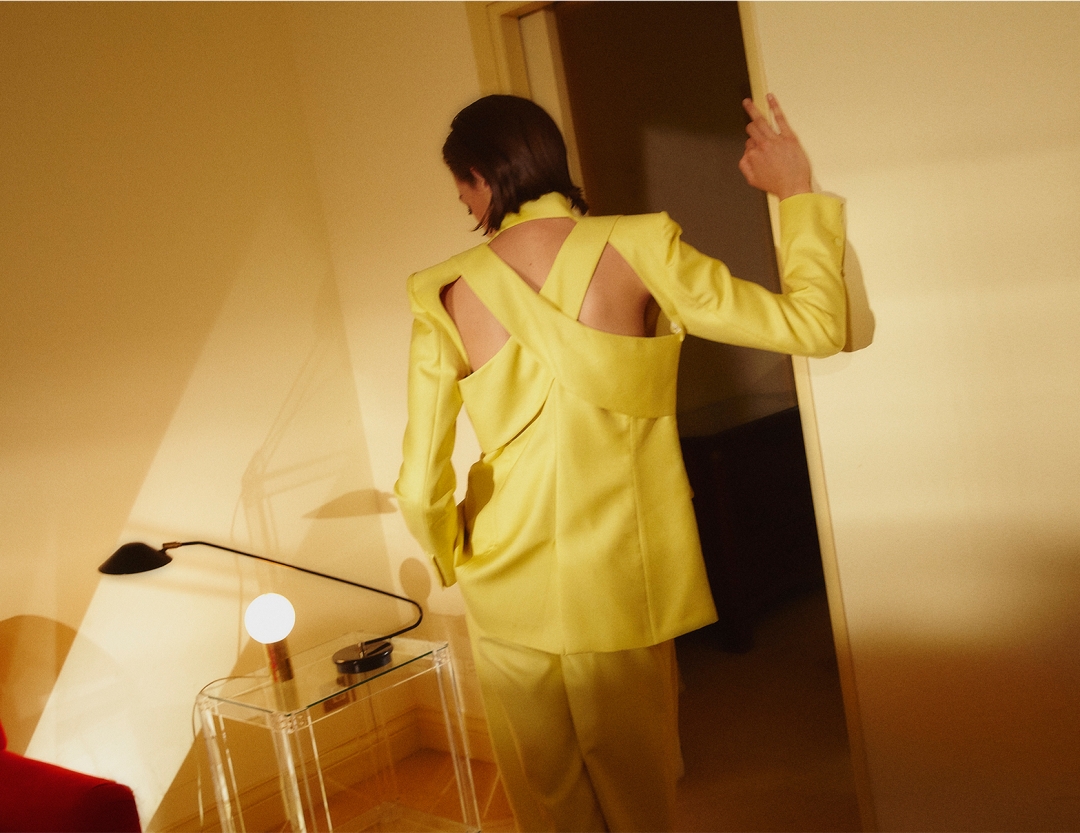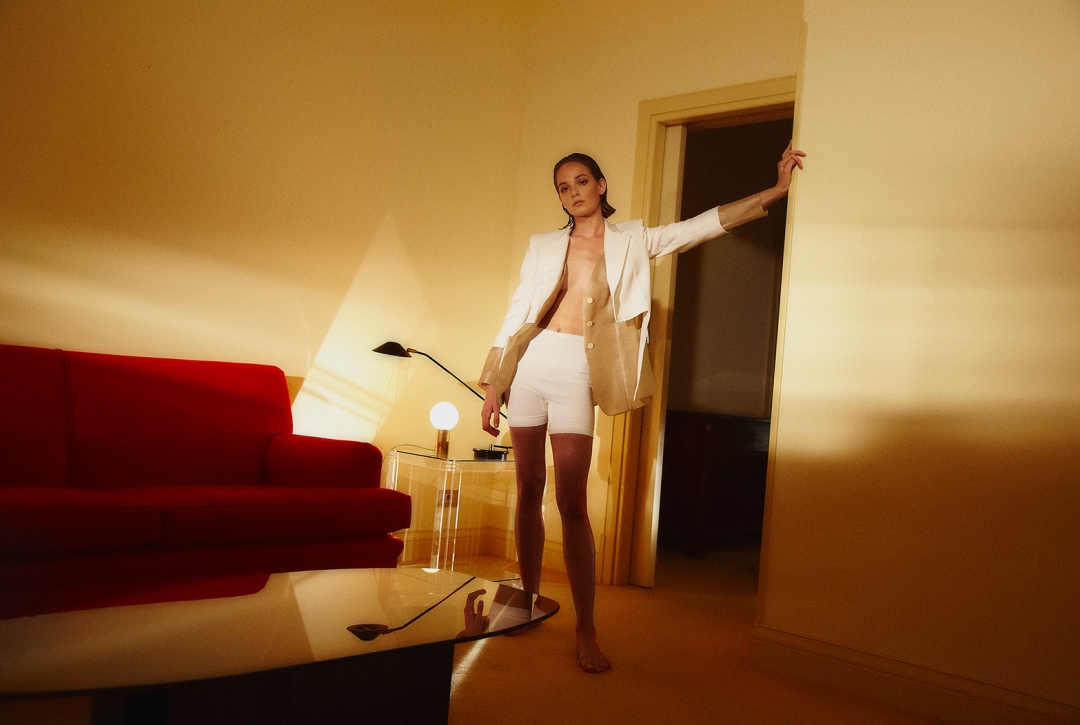Otrura
Couture in motion

Last April, Otrura displayed the full force of its contemporary approach to couture at Madrid Fashion Week; a debut that was accompanied by the L’Oréal Paris Award for Best Collection at the MBFWM. Now with an invitation to personally reset that transcends fashion, they are reaffirming their presence by exploring the complexity of the tailoring process.
In 2016, Sergio de Lázaro (Madrid, 1980) abandoned a career linked to large luxury brands such as Hermés, Dior or Etro to rethink tailoring. Together with Verónica Abián Otrura, a fashion house with symbolism rooted in volume, legacy and sustainability, they custom design what they call “emotional couture”. That is, garments upon which memories are printed. With intelligent symbiosis between tailoring and dressmaking, and a mixture of techniques, they create and recreate pieces to last a lifetime. In 90s Antwerp style, their annual collections never fail to transcend the merely aesthetic in order to further investigate the concept. Inspired by the work found in their workshops and offices, they celebrate the simplicity of hybrid-patterning using barely noticeable artifices. It is more than a technique: Otrura vindicates activist tailoring that defends traditional crafts while staying true to Made in Spain.
After the resounding success of your debut in April at the MBFWM where you were awarded the prize for the best collection, what do you expect from this edition?
To reaffirm ourselves in our discourse, in which we always try to nod at the craft job behind it. Also, to humbly transmit another vision of fashion. A perspective in which garments from old times, that were once important to oneself or a family member, are modified to fit. We bring them back to life!
Is this resurrection of clothing what you call recostura?
Yes. It is recreation of garments that are emotional for the individual. The important thing is that they have existing meaning for her. For example, a friend gave us a skirt from 20 years ago that she bought with her first salary.

For Otrura, the fashion shows represent an act of communication of a concept. In the image, the one from the Autumn - Winter 2021/2022 collection at Ifema. © Estrop / Getty Images
How do you rework those pieces?
With a lot of respect. We give them new life, but while respecting the original piece as much as possible. We don’t use patchwork, nor are we interested in making the skirt into something it is not. We rely on changing the patterns, modifying the garment and bringing out all of the contemporary potential that it holds. Occasionally, the garment will have signs of the passage of time and the client could ask us to remedy them. For some it is the other way around and they prefer to keep it. What we never do is break or cut. We try to simply undo and sew again — that is the key.
How did the idea for recostura come about?
By looking within. We create garments intended for a long lived journey as part of a wardrobe. If your way of life changes, you bring it back to us and together we modify it and give it fresh legs. We decided to open recostura’s doors to everything that can inspire and be rescued. We try to do something as emotional as possible with each piece.
What exactly is emotional tailoring?
As with a painting, which is not finished until it is hung, something similar happens with clothing. We make the pieces, but it is the person who truly shapes them; who puts them on in a certain way, at a specific time. It could be for a dinner, a meeting or a job interview. In the end, they harbor the emotions. You’ll open your closet and find clothing that are full of emotions, and are without seasons.
In April we paraded pieces developed a year ago. Now we are going to do the same. We have to try to understand fashion as something totally different, but de facto. It is not enough to only think about sustainability, we have to take risks.
“We have to try to understand fashion as something totally different, but ‘de facto’. It is not enough to only think about sustainability, we have to take risks”
And in order to take those risks, how do you understand sustainability?
From a broader perspective. For us it is simply a foundation. One is the arts and crafts, the legacy. Another, contemporaneity. Lastly, and most powerfully, social sustainability. Materials come and go. For example, in the 1960s there was plastic in haute couture, because it was an experimental element. Now that would be unthinkable. But we believe that sustainability has to go further as it is useless when limited to fabrics. We can have them recycled, great. But what else? In our opinion, produce at Moral de Calatrava. Do not do it in another country or outside of Europe. That is sustainability and commitment. Also, investigate the biodegradable compounds that can be 3D printed and create buttons with them. Then, finish each button by hand. Another way is to get involved in education. We work together with institutions such as: Centro Superior de Diseño de Moda (CSDMM), Escuela Universitaria de Diseño, Innovación y Tecnología (ESNE), Instituto Europeo de Diseño (IED) or Universidad de Villanueva. There is great pride in being involved and giving opportunities to students. I think it is a part of sustainability because you impact both the next generation worker and consumer.
Your production is linked to small workshops in Spain. How important are the craft jobs craft jobs today in the sector?
We have to bet on them. Actively. Slow fashion, or Made in Spain, is useless if there is no commitment to also produce here and to accept the cost that that entails. In turn, this implies a need for communication with the end customer that explains the real value of a garment Made in Spain. Because choosing a workshop in Spain and asking for the same cost price as in India is not sustainable. We must learn from other sectors and follow the same path as wine and haute cuisine.
“Slow fashion, or Made in Spain, is useless if there is no commitment to also produce here and to accept the cost that that entails”
What inspires Otrura?
The materials and their artisanal origins. Also the technical solutions, or in short, the workshop. Understanding how a certain machine works and the consequences of taking the seams to another level; that holds a lot of very subtle creativity. And, of course, there are few fireworks. Our garments are seemingly simple, but they contain a lot of complexity.
And how is the seasonality that prevails on the catwalk related to this philosophy of durability?
For us, the catwalk is a communication platform. It is, above all, an act of communication of a concept.We do not see the shows as a mere succession of looks, but as something closer to that of the 90s Belgian School where the fundamental component was the concept.
How do you manage to shape it?
We defined our annual theme that we call Movement, because it is always evolving, it is, therefore, a collection that never ends. Each show reveals an aspect related to this theme. This year, with The sleep break, we talk about the reality of dream, and the show is instead called Awakening. Likewise, all our shows are, somehow, linked to social context. Back in April we talked about the latent office. Now we emphasize that there is a break with the dreams inherited from other generations, and the fact that a reset is necessary.
We see how many Spaniards from the 80s and onwards do not know where they have failed. They have studied, they have university degrees, masters, languages, they have traveled and, even so, they either live with their parents or in precarious situations. We talked about that fractured reality and the ability to say “We can change things. I'm going to find my own paradigm”. We like to end with a concept and invite everyone to either make it their own or look for a different idea.
Speaking of dreams, what is Otrura's?
To continue strengthening, growing, being able to give the workshops security and to do things that excite us. We want to revitalize arts and crafts and link them with new technologies so that, ultimately, our project excites more people.



